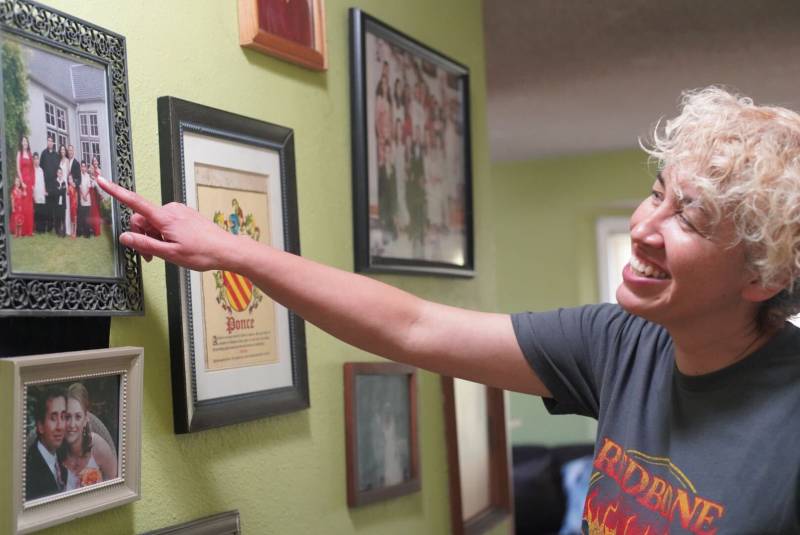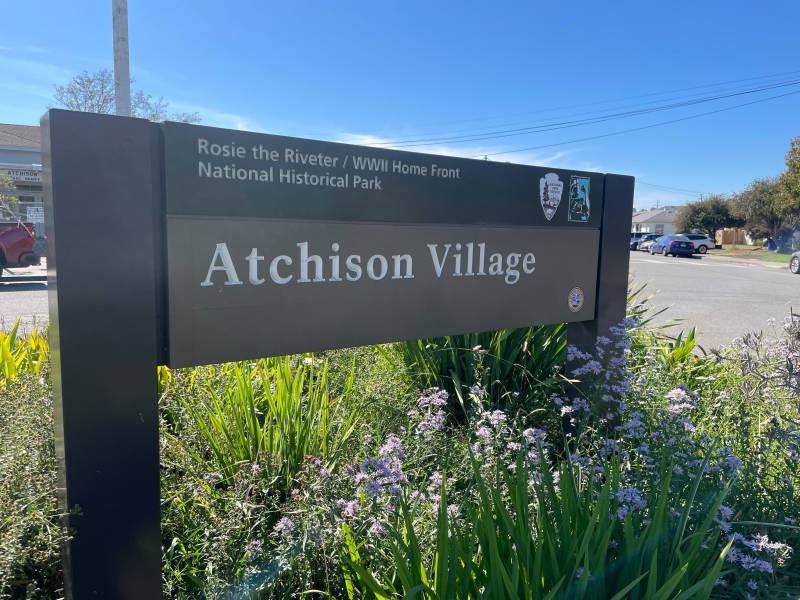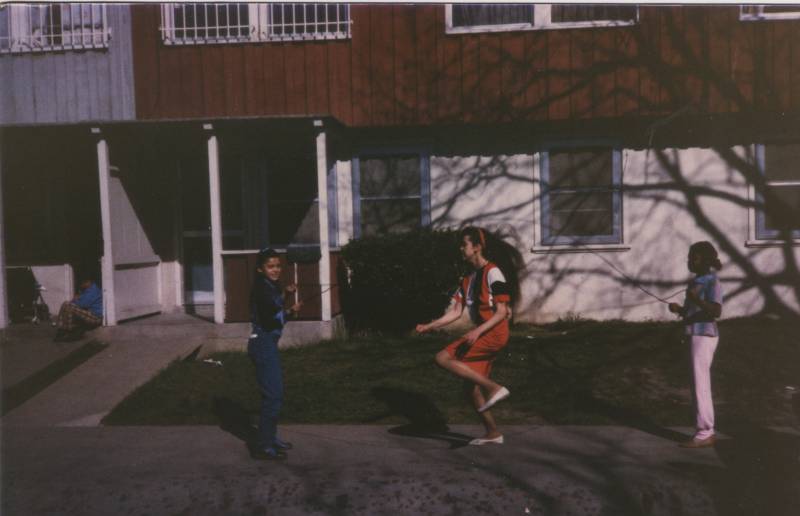Director and screenwriter Maria Victoria Ponce was raised in Richmond, California. She’s mastered the art of telling heartfelt and humorous stories that speak to her individual experience of coming up there, as well as the awkwardness that’s universally found in the process of growing up– no matter where you’re from.
In her film Death & Deathability (2021), Maria brings us into the world of a little girl named Ceci, played by Blanca Ordaz. After getting her period, Ceci is convinced that death is imminent, so she makes a bucket list that includes picking wildflowers, eating tacos, getting a gift for her father, and experiencing her first kiss with a boy named Javi, played by Maria’s son (Nicandro Cheung).
In Maria’s film Ruda (2019), a little girl name Aurora, played by Adriana Ponce (Maria’s actual niece), sets out on a quest to live out a superhero fantasy, then injures herself and quickly comes to the realization that her grandmother, the local curandera, is a superwoman in the flesh.
Scenes from Ruda were filmed in Maria’s parents’ house in Richmond’s Atchison Village, the walls of which are lined with photos from her adolescence. These images of family gatherings and formal events lend a window into Maria’s mindset as she creates the worlds depicted in her films.

Recently, she invited Rightnowish producer Marisol Medina-Cadena and I to stop by and see the family photos for ourselves. We discussed what it takes to tell stories that speak to her personal experience, migrating from Mexico as a child to the city of Richmond, where she grew into a woman, a mother and a filmmaker.
A 2022 Ranin Fellow, Maria says she now has the resources to tell more stories about Richmond, and plans to expand to other genres, including drama and horror. Listen to the podcast for our full conversation.

Below are lightly edited excerpts of our conversation with Maria Victoria Ponce
Pen: Thank you for having us here today. Tell us about the significance of this place…
Maria Victoria: Yeah, we’re in my mother and father’s house in a community called Atchison Village. And Atchison Village has a wonderful historical significance to it. It was built during World War II for defense workers in the Kaiser Shipyards.
Pen: The Richmond that you grew up in, the Iron Triangle. Tell us specifically, what was that like?
Maria Victoria: All my childhood friends, the boys, a lot of them are now dead or in prison. Unfortunately. A lot of the girls, it was, you know, eloping with your boyfriend, at you know, 13, 14, 15, 16, 17, so it was tough. But aside from that, there was so much like a beauty of being in an environment where you get to go play outside

Maria Victoria: I keep going back to coming of age stories in my work. I love that age between 10 and 13 because that is the time that I discovered that my freedom was dependent on me. It’s my first kiss. It’s me getting my period. It’s me seeing my older sisters, you know, flirt with guys. You know, it’s me understanding the dynamics of my parents and my siblings and so I just keep coming back to these stories of discovery and also of empowerment.
Marisol: Thinking about Ruda, Death & Deathability, both coming of age films, i’m wondering where they’re coming of age films that you watched growing up or even in your adult journey of becoming a filmmaker that just totally shape your style?
Maria Victoria: I know that John Hughes movies, there’s a lot of cringiness to them now, but that’s what I came up with ya know, 16 Candles. I mean, I can watch that film over and over again and relate to the characters and how it feels to want to go to high school and be cool.
To me, a lot of the Jane Austen films are coming of age, you know, and I love what they did with Clueless. I tend to lean more towards the comedic ones but i’ll take them all. I grab, you know, a lot of inspiration from them. But then I’m hoping that I’m putting my own flavor on it, you know, and making it hella Richmond!
Watch Maria’s film Ruda below



